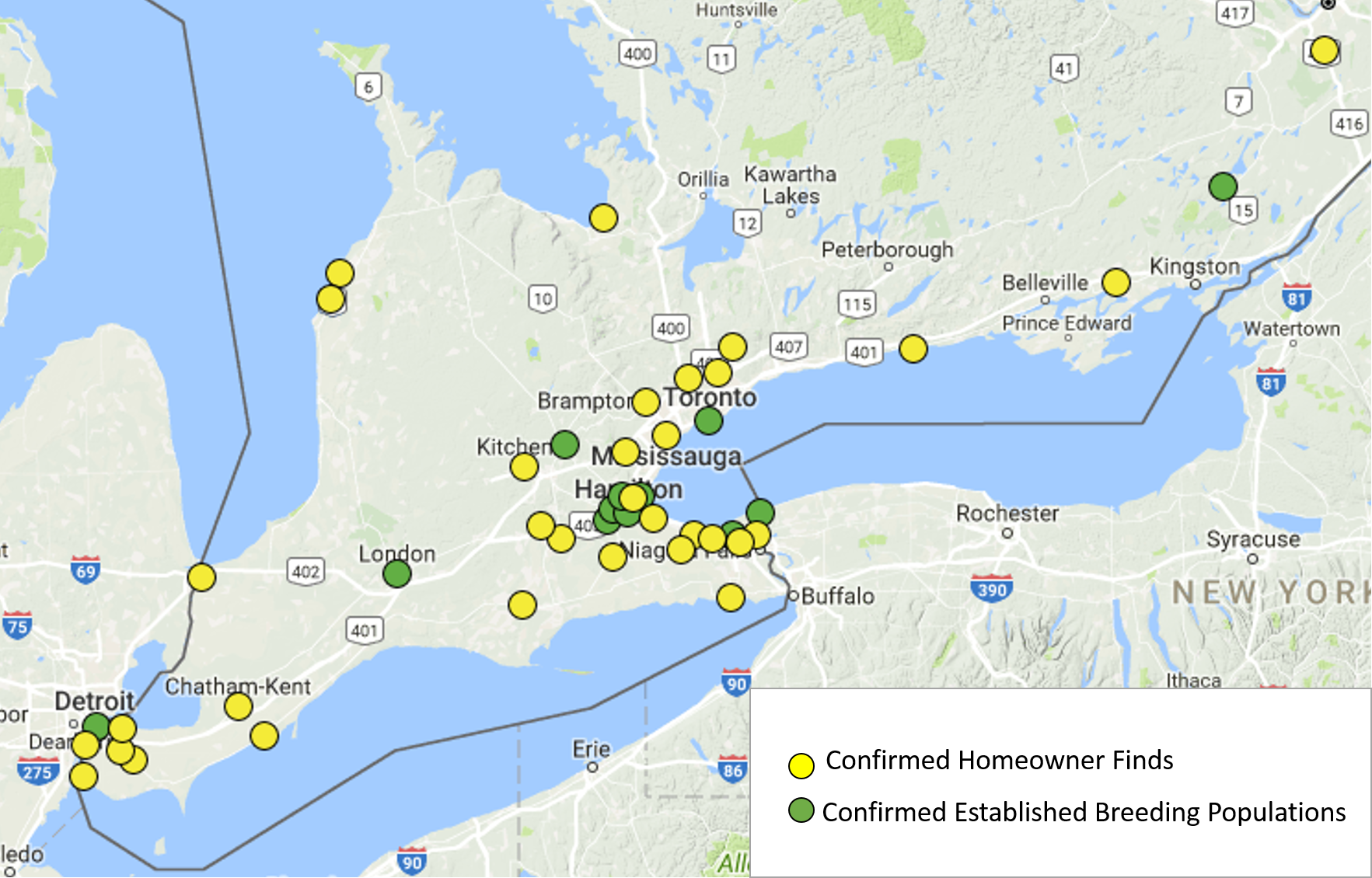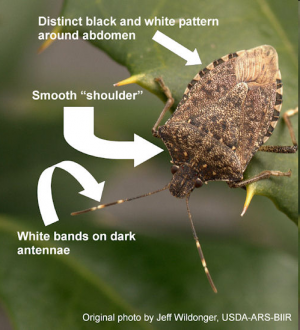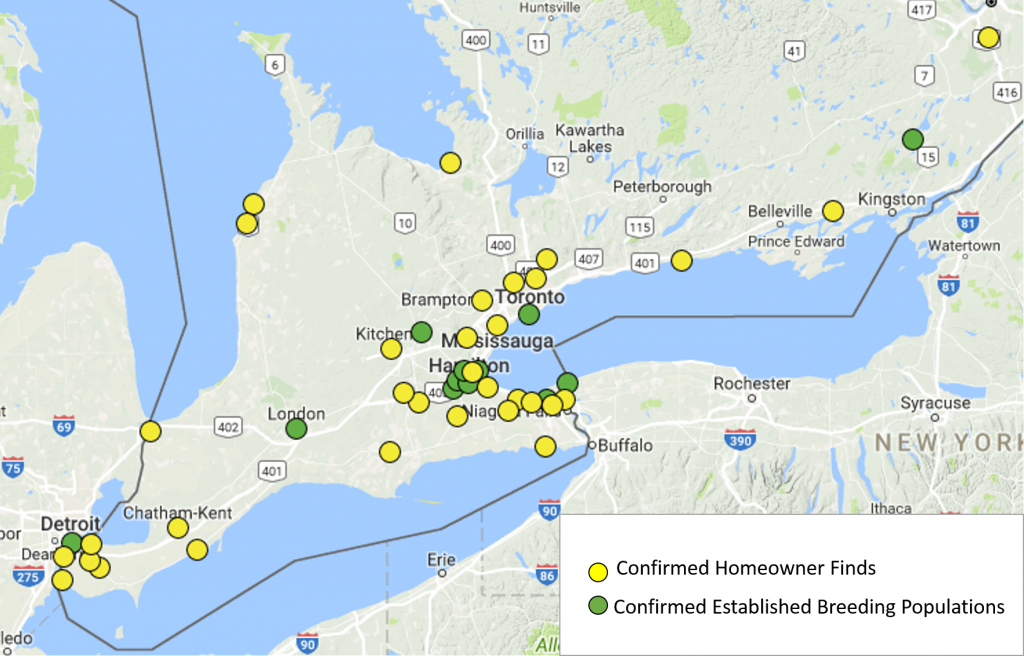Co-Authored with Karli Barton, Field Research Technician, OMAFRA-Ridgetown
As colder weather approaches, we have the opportunity to identify overwintering locations for the invasive brown marmorated stink bug (BMSB). BMSB and a few other stink bugs like to move into homes and other sheltered areas for the winter. This is a great time for homeowners dealing with this nuisance to help with citizen science and alert us to new locations. The brown marmorated stink bug is an invasive species from Asia that was first introduced to Pennsylvania in the late 1990s, causing major economic losses in agricultural production. It has since moved into a number of states and provinces, including Ontario. This invasive species has over 300 known hosts including a variety of fruit trees, berries, grapes, vegetables, field crops including corn, soybeans and edible beans, ornamental trees, and ornamental shrubs.
BMSB spend the winter months in houses and move onto their host plants during the warmer months. Although the insect has not yet been observed in field crops in Ontario, established breeding populations have been confirmed in a few urban locations. The extremely mobile nature of this insect during the growing season means that it is difficult to scout and monitor. Alternatively, overwintering locations can serve as a fixed location for monitoring and can provide reliable information about the risk level of BMSB. We often establish field survey locations near these hihg risk locations where they have been observed by homeowners. With colder weather coming, it is likely that homeowners may begin to encounter these in their homes.

If you think you have found BMSB in homes in locations not represented on the map, please contact the OMAFRA Agriculture Information Contact Centre at 1-877-424-1300 or send an email with good quality photos to ag.info.omafra@ontario.ca.

There are a couple identifiable characteristics that can be used in distinguishing BMSB from look-alikes:
- White bands on its antennae
- Distinct white triangles in a pattern along its abdomen
- The edge of its pronotum or “shoulders” is smooth
You can also visit our website for additional photos, infosheets, ID postcards, and potential management options at ontario.ca\stinkbug.
